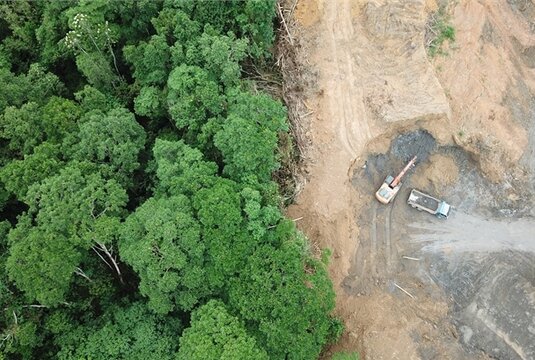1 November 2025
Leather is a byproduct of the meat and dairy industry, which means it doesn’t directly drive deforestation. However, the leather industry still plays a significant role in shaping more sustainable practices across agriculture and fashion. That’s why any brand or retailer that buys a hide has a powerful opportunity – and responsibility – to promote deforestation-free supply chains. Leather Working Group (LWG) is leading the charge with a robust framework that brings together traceability tools, independent audits, and stakeholder collaboration to tackle deforestation head-on.

Deforestation defined
Deforestation is the large-scale removal or thinning of forests, usually caused by human activity like agriculture, cattle ranching, logging, or development. It’s a major environmental issue, contributing to biodiversity loss and climate change. Because many leather hides originate in regions vulnerable to forest loss, making the supply chain deforestation-free is critical for the industry’s future.
Setting bold targets
Leather Working Group has set an ambitious goal: to ensure that all leather in certified supply chains is deforestation-free by 2030. It’s a tough target – especially given the complex relationship between cattle farming and leather production – but growing pressure from regulations and conscious consumers means the industry is ready for change. This commitment is central to LWG’s mission of driving continuous environmental improvement and responsible sourcing.
Working together
Leather Working Group has teamed up with Textile Exchange and World Wildlife Fund to create a deforestation-free call to action for leather. This initiative calls on brands and retailers to commit to sourcing all their bovine leather from deforestation-free supply chains by 2030 or sooner. It sets clear expectations for brands, providing them with tools and guidance to support them on the journey.
From commitment to action
All companies involved in purchasing hides or leather along the value chain play a critical role in promoting sustainable practices. This influence spans from direct operations and tannery practices to eliminating deforestation and land conversion within their supply chains, as well as improving efficiency and productivity. Leather Working Group requires additional due diligence reporting on sourcing from high-risk regions as part of the certification. For the next phase of Standards development, we are consulting with a technical team representing a broad range of stakeholders to adapt these requirements to meet evolving market needs. LWG has hosted several webinars on this topic, which stakeholders can access via the User Area of our website.
New regulations
Regulations are evolving quickly, and leather supply chains need to stay ahead. The most impactful is the European Union Deforestation Regulation (EUDR), which will require companies to prove that their products are deforestation-free if they want to sell or export in the EU. Importers of cattle, leather, hides, and skins need to conduct due diligence to ensure that these goods are not the result of deforestation. Feed must also be deforestation free.
How LWG certification supports progress
The Leather Working Group audit does not include farm-level assessment – but it does evaluate leather processing sites across various sustainability criteria, including environmental management, chemical use, water and energy efficiency, waste management, social compliance, and traceability. The current audit process tracks leather back to the slaughterhouse, with increased monitoring for hides from high-risk countries. Work is already under way to include deforestation data in future versions of the Standard, ensuring that certification evolves with the needs of the planet.
